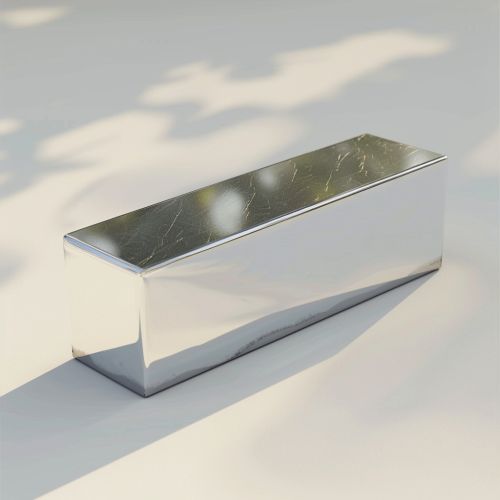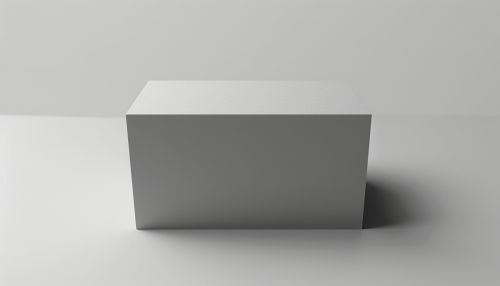Rectangular Prism
Definition
A rectangular prism, also known as a cuboid, is a three-dimensional geometric figure with six faces, all of which are rectangles. This polyhedron is defined by three intersecting perpendicular pairs of parallel lines. These lines form the edges of the prism and meet at its vertices.
Mathematical Description
The rectangular prism is a special case of a prism, where the base is a rectangle. It has six faces, each of which is a rectangle. The opposite faces of a rectangular prism are congruent, meaning they have the same size and shape.


The volume of a rectangular prism can be calculated using the formula:
V = lwh
where 'V' is the volume, 'l' is the length, 'w' is the width, and 'h' is the height of the prism.
The surface area of a rectangular prism can be calculated using the formula:
A = 2lw + 2lh + 2wh
where 'A' is the surface area, 'l' is the length, 'w' is the width, and 'h' is the height of the prism.
Properties
Rectangular prisms have several distinct properties that set them apart from other three-dimensional figures. These include:
- All faces are rectangles.
- Opposite faces are congruent.
- All edges are parallel to their opposite edge.
- All angles are right angles (90 degrees).
- The diagonals of a rectangular prism bisect each other and are congruent.
- The cross-section of a rectangular prism, parallel to its base, is a rectangle.
Applications
Rectangular prisms are commonly used in various fields, including architecture, engineering, and design, due to their straightforward properties and ease of calculation. For instance, buildings and rooms are often designed as rectangular prisms to maximize space and simplify construction. In packaging design, rectangular prisms are used to create boxes and containers that are easy to stack and store.
In mathematics and physics, rectangular prisms are often used in problems involving volume, surface area, and spatial reasoning. They are also used in computer graphics and game design, where they can be combined to create complex shapes and structures.
